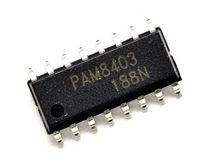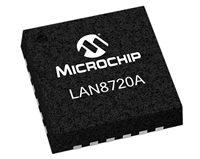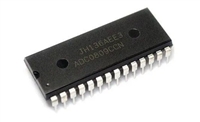Philips Semiconductors
Product specification
Programmable divide-by-n counter
74HC/HCT4059
If n = 8 479 and the selected mode = 10, the preset
value = 8 479/10 with a remainder of 9, thus the JAM
inputs must be set as shown in Table 3.
Control inputs Kb and Kc can be used to initiate and lock
the counter in the “master preset” mode. In this condition
the flip-flops in the counter are preset in accordance with
the JAM inputs and the counter remains in that mode as
long as Kb and Kc both remain LOW. The counter begins
to count down from the preset state when a counting mode
other than the “master preset” mode is selected.
Whenever the “master preset” mode is used, control
signals Kb = Kc = LOW must be applied for at least 2 full
clock pulses. After the “master preset” mode inputs have
been changed to one of the counting modes, the next
positive-going clock transition changes an internal flip-flop
so that the count-down begins on the second
To verify:
n = 10 (1 000 × 0 + 100 × 8 + 10 × 4 + 1 × 7) + 9
n = 8 479.
The three decades of the intermediate counting section
can be preset to a binary 15 instead of a BCD 9. In this
case the first cycle of a counter consists of 15 count
pulses, the next cycles consisting of 10 counting pulses.
Thus the place value of the three decades are still 1, 10
and 100. For example, in the divide-by-8 mode, the
number from which the intermediate counting section
begins to count-down can be preset to:
positive-going clock transition. Thus, after a “master
preset” mode, there is always one extra count before the
output goes HIGH. Figure 6 illustrates the operation of the
counter in the divide-by-8 mode starting from the preset
state 3.
3rd decade: 1 500
2nd decade: 150
1st decade:
15
If the “master preset” mode is started two clock cycles or
less before an output pulse, the output pulse will appear at
the correct moment. When the output pulse appears and
the “master preset” mode is not selected, the counter is
preset according to the states of the JAM inputs.
The last counting section can be preset to a maximum of
1, with a place value of 1 000. The first counting section
can be preset to a maximum of 7. To calculate n:
n = 8 (1 000 × 1 + 100 × 15 + 10 × 15 + 1 × 15) + 7
When Ka, Kb, Kc and LE are LOW, the counter operates in
the “preset inhibit” mode, during which the counter divides
at a fixed rate of 10 000, independent of the state of the
JAM inputs. However, the first cycle length after leaving
the “master preset” mode is determined by the JAM inputs.
n = 21 327.
21 327 is the maximum possible count in the divide-by-8
mode. The highest count of the various modes is shown in
the Function table, in the column entitled “binary counter
range”.
When Ka, Kb and Kc are LOW and input LE = HIGH, the
counter operates in the normal divide-by-10 mode,
however, without the latch operation at the output.
The mode select inputs permit, when used with decimal
programming, a non-BCD least significant digit. For
example, the channel spacing in a radio is 12.5 kHz, it may
be convenient to program the counter in decimal steps of
100 kHz subdivided into 8 steps of 12.5 kHz controlled by
the least significant digit. Also frequency synthesizer
channel separations of 10, 12.5, 20, 25 and 50 parts can
be chosen by the mode select inputs. This is called
“Fractional extension”. A similar extension called “Half
channel offset” can be obtained in modes 2, 4, 6 and 8, if
the JAM inputs are switched between zero and 1, 2, 3 and
4 respectfully. This is illustrated in Fig.5.
This device is particularly advantageous in digital
frequency synthesizer circuits (VHF, UHF, FM, AM etc.)
for communication systems, where programmable
divide-by-”n” counters are an integral part of the
synthesizer phase-locked-loop sub-system. The
74HC/HCT4059 can also be used to perform the
synthesizer “fixed divide-by-n” counting function, as well
as general purpose counting for instrumentation functions
such as totalizers, production counters and “time out”
timers.
This feature is used primarily in cases where radio
channels are allocated according to the following formula:
Schmitt-trigger action at the clock input makes the circuit
highly tolerant to slower clock rise and fall times.
Channel frequency = channel spacing x (N + 0.5)
N is an integer.
1998 Jul 08
3






 PAM8403音频功率放大器:资料手册参数分析
PAM8403音频功率放大器:资料手册参数分析

 LAN8720以太网收发器:资料手册参数分析
LAN8720以太网收发器:资料手册参数分析

 SI2301 N沟道MOSFET:资料手册参数分析
SI2301 N沟道MOSFET:资料手册参数分析

 ADC0809逐次逼近寄存器型模数转换器:资料手册参数分析
ADC0809逐次逼近寄存器型模数转换器:资料手册参数分析
